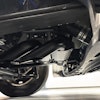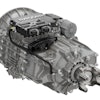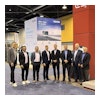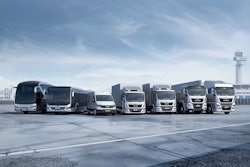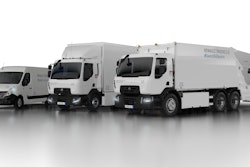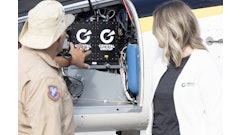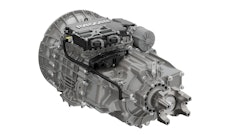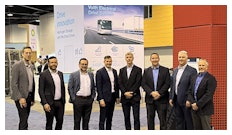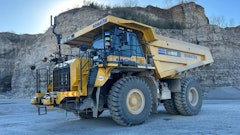Digitization, connectivity, automated driving and alternative powertrains are the drivers of innovation in commercial vehicles. These topics are therefore at the focus of the 67th IAA Commercial Vehicles, which will be held in Hannover in September 2018 and is organized by the German Association of the Automotive Industry (VDA). At the international press workshop, which took place in advance of the world’s most important trade show for transport, logistics and mobility in Frankfurt am Main, attracting numerous high-level representatives of the commercial vehicle industry and more than 120 international journalists, VDA President Bernhard Mattes stressed: “The digitization of traffic opens up completely new opportunities for making mobility smoother and more efficient in large metropolitan areas and beyond. That reduces emissions. Most importantly, digitization, connectivity and automated driving will bring about a quantum jump in road safety.”
Furthermore, digitization can contribute to even better connection of the various transport modes within the transport and logistics chains: “This is necessary because we need the interplay of all types of transport in order to cope with the increasing volumes of freight,” Mattes explained. 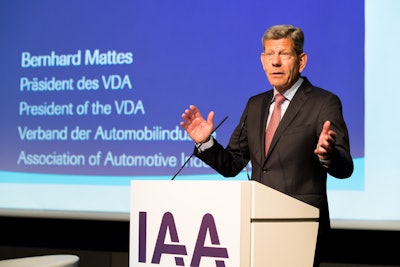
The VDA president drew attention to the advantages of digitization, using platooning as an example: “The Truck Platooning Challenge has proved the technical feasibility of platooning. Now it is being tested in real-life logistics operation. We find that it can reduce fuel consumption and CO2 output by up to 10%. The next step is now to deploy mixed platoons with trucks from different makers. That will ensure the general applicability of the approach.” Mattes emphasized, “One essential prerequisite for digitization is the existence of an appropriate digital infrastructure. Innovative mobility offers will only be possible if there is coverage with the latest mobile communication technology on federal trunk roads and in the network of less major roads.”
Electric mobility would also be a key theme at the IAA, Mattes underscored. There are many openings for deployment, particularly for vans and urban buses but also in local distribution using battery-electric vehicles up to 26 t. The IAA will therefore also give visitors an opportunity to experience electric mobility on a test track.
However, the possibilities must not be overlooked that are offered for especially environmentally friendly transport, for example by natural gas, particularly in metropolitan areas. Mattes added, “E-fuels synthesized using renewable electricity open up the prospect of completely CO2-neutral operation also for trucks. Moreover, they exert their effects not only in newly registered vehicles, but throughout the vehicle fleet. That brings about considerable CO2 reductions.”
The VDA president stressed, “We are facing important political preparations in climate protection policy. The commercial vehicle industry wishes to make its contribution in this area. Yet the manufacturers cannot overcome the challenges on their own. An integrated approach is necessary involving vehicle production, vehicle use, fuels and the infrastructure in equal measure.”
According to Mattes, considerable progress had already been achieved in reducing fuel consumption and CO2 output: “Since 2000, CO2 emissions from road freight traffic in Germany have fallen by 8% – despite the increased volume of traffic – while emissions per tonne-kilometer have come down by a whole 35%.”
He went on to say that fuel consumption accounts for over a quarter of the total costs of ownership for a long-distance truck. Unlike the market for passenger cars, the market for commercial vehicles is driven solely by efficiency. “Low consumption is therefore an important competitive advantage on the market. So it is right that the European Commission is endeavoring, in close cooperation with the commercial vehicle industry, to further improve market transparency at this point. The simulation tool VECTO, which delivers 'official' comparable values for consumption and CO2 output, is an appropriate instrument for this,” Mattes said.
The VDA president took a critical view of the European Commission’s proposal for the first CO2 Regulation for heavy-duty commercial vehicles: “The industry supports a realistic regulation in principle. However, the Commission’s draft is totally out of proportion.” He explained that the European Commission has proposed CO2 reduction targets of 15% by 2025 and 30% by 2030. These targets are roughly double those that the industry considers very ambitious, but still feasible. “Furthermore, the penalties for missing the targets are exorbitantly high and almost arbitrary,” Mattes emphasized.
“We also take a critical view of what the Commission proposed in the second mobility package for the CO2 fleet-wide limit values applicable to passenger cars and vans. The projected 30% reduction by 2030 is already very ambitious for passenger cars. For vans, this value is just not realistic,” Mattes pointed out. First, he explained, there are many different types of vans whose construction also varies widely – resulting in differences in consumption. So it is likely to be difficult to implement a standardized CO2 value. Second, the potentials for electrification also vary tremendously. “And third, new technologies are generally only introduced in light commercial vehicles after they have demonstrated their benefits in passenger cars,” the VDA president underscored.
He emphasized that “The European Parliament and the Council of Ministers are now called on to make adjustments in order to find an approach that will indeed still be ambitious, but which above all must also be realistic and appropriate in practice. Brussels is oversimplifying the issue if it merely transfers the reduction rates for passenger cars to the commercial vehicle sector, which is completely different in nature. The guiding principle for any CO2 Regulation must be the basic principle of technology neutrality. We must be able to exploit all the potentials.”
The markets, on the other hand, were providing welcome news: “The international commercial vehicle markets are developing well. For example, by the end of May our Western European home market had expanded by a good 1%,” Mattes stated. So far this year, nearly 125,000 heavy-duty trucks had been sold, which was the highest figure since 2008. The truck markets were also growing in the new EU member states and in Russia. Light commercial vehicles in Western Europe showed a rise of 4% in the first five months of this year.
The situation was equally good on the U.S. truck market, which had again developed a strong dynamic since the second half of 2017. In the first five months of the current year there has been a rise of almost 18%. And China, the world’s largest truck market, also showed double-digit growth from January to May (increasing by 12%), even if the market may be expected to cool off during the second half of the year.
Mattes continued, “In addition Brazil, a cause for concern over recent years, is again generating optimism.” Sales rose by more than half – albeit at a low level – during the first five months. We are, however, still a long way from previous record figures. India, the third largest individual market in the world, has also expanded strongly so far this year (+49%).
The markets for trailers and bodies have also developed well. Sales by this manufacturer group in Germany grew by 10% up to the end of April, and new registrations of semi-trailers added 11% in the period up to May.
Mattes emphasized, “On the commercial vehicle markets, the outlook for 2018 as a whole is also largely positive, especially given the healthy state of the global economy. No-one is going to overlook the risks here – especially the political risks – and that includes the effects of Brexit. In important regions there is the threat of isolationism and protectionism. So it is all the more imperative that we continue to back free and fair trade and continuation of the negotiations between the large trading nations.”
The 67th IAA Commercial Vehicles (with the slogan “Driving tomorrow”) will take place in Hannover from September 20-27, 2018. The New Mobility World (NMW) is the IAA’s multidisciplinary B2B event for the mobility of tomorrow. The NMW will focus on connected and automated driving, alternative powertrains, urban logistics and transport services. The New Mobility World will give these five important topics a dedicated platform where decision-makers and designers provide information on how traffic, mobility and logistics can become more efficient, greener and smarter. With its three event formats EXPO, FORUM and LIVE, the New Mobility World will present an extensive program with plenty of experiences.

